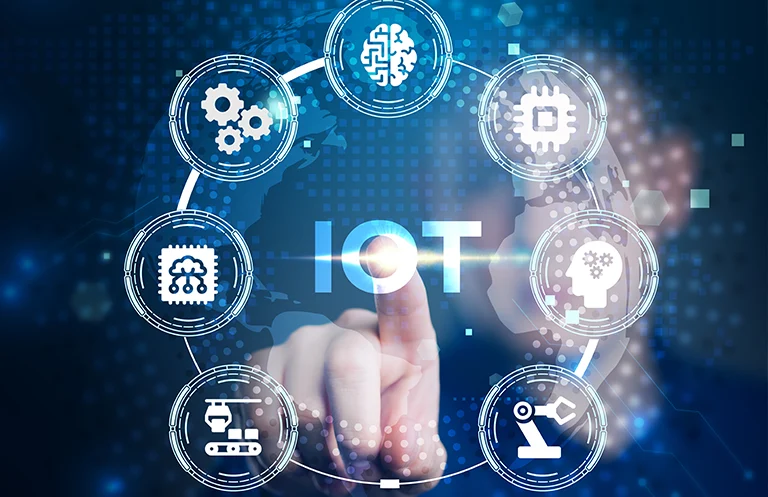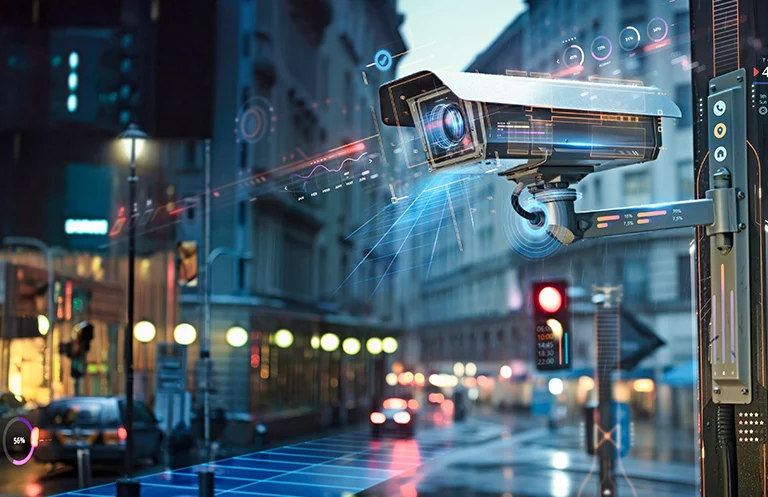In the traditional healthcare setting, almost all data and insights of patient’s health are lost the moment when the patient leaves the clinic or hospital. This data is found and considered again only when patients return for their next visit or in an emergency situation.
This has been a consistent problem, which affects hospital operations on a daily basis. Thanks to technology advancements, now we have a solution, remote patient monitoring (RPM).
RPM helps in gathering and transferring health-related data even outside the conventional clinical setting. RPM gained popularity due to advancement in mobility and sensor technology.
RPM is driven by the aim of preventing rather than curing illness and to drive patient engagement. But in order to succeed with RPM, the provider needs to answer this question carefully:
Is the Remote Patient Monitoring System Technically Feasible?
In order to check for technical feasibility of the product, it’s important to consider a few factors when implementing the final system. The following factors would define the technical feasibility of your device:
Bonus Content : Download the whitepaper – Revolutionizing the Healthcare Industry with Big Data Analytics and Visualization.
1. Bio-health Engineering and Mobile Device Technology Advancements
As a healthcare provider, one must develop systems that blend patient’s relevant needs with the Engineering-Technology Advancement.
With the rise of mobile technology, Wearable Wireless Sensor Networks (WSNs) is an emerging technology which is attached and implemented into human bodies to monitor and collect information related to their physiological parameters, movements and surrounding environment.
With regards to sensors, wearables need to have multiple digital sensors that can be integrated with the sensor network consisting of other wearable sensors.
The new trend is to contain ambient sensors with wearable sensors to measure the effect of surroundings on the patient. As technology grows consistently, sensors and wearables can be further miniaturized for novel applications.
Pre-validated Hardware-Software sensors and Control IP subsystem must be optimized to process data from digital sensors and enable more power-efficient processing of sensor data.
Low power IC and chipset will increase the significant battery life of wearables and this will give a lot more mileage out of wearables to users. Systems must leverage mobile platforms like Android, iOS, Windows and should have smartphone attachments.
2. Wireless Connectivity (Wi-Fi, BLE, Streaming)
For effective and efficient deployment of remote patient monitoring, wireless connectivity options like Wi-Fi, BLE or infrared are very important factors to consider. As the size of wearable matters, the size of wireless connectivity modules need to be compact as well as efficient enough to deliver connectivity speed and range as per system requirements.
It is a good idea to use one consolidated connectivity module for Bluetooth and Wi-Fi instead of using two different modules separately. With a compact size and high performance, the modules should provide highly reliable connectivity within range.
By considering wearables attached to the body, it is not advisable that the device operates at a higher frequency that might harm the human body. Hence it is mandatory for connectivity modules to have the frequency between 10GHz-20GHz and a maximum range of 2 meters.
It is also a great idea to provide support for streaming in modules because in case of an emergency, streaming with wireless communication protocols would be more beneficial to treat the patient remotely.
Also, spectrum regulation, the power requirement for connectivity, range or bandwidth needs are factors to be considered for wireless connectivity.
Wireless connectivity can be disturbed by numerous sources like microwave, satellite dishes, electrical sources, wireless speakers/Bluetooth or any other device that is operated at high frequency and this will create connection interference. So providers need to consider connectivity interference sources while defining wireless connectivity requirement for systems.
HANDPICKED RELATED CONTENT:
5 Ways IOT and Mobility Address Common Concerns of Healthcare Industry
3. Human Factors Engineering
Human factor engineering is used to design human-machine interface that focuses on interactions between humans and devices.
For RPM wearable devices, the most important goal of the human factors engineering is to decrease use-related hazards and risks at the minimal level and to ensure users can use the device safely and effectively.
For a better understanding of a human-machine system, it’s important to understand how devices react to user inputs and also how they provide feedback about their action to the user. From user’s end, it needs to understand how people perceive information received from the device and utilize the same for decision making and action taking.
Also, it is important to understand the way people manipulate devices, its component or its control. The core importance of Human factor engineering is to ensure the safety of user as well as functionality.
Human factor Engineering focuses on creating quality user interfaces that drive rapid learning, user satisfaction, relatively error-free system and efficient interaction.
US Food and Drug Administration (FDA) has begun to include Human factor Engineering reviews as a part of their pre-market approval process too.
4. Data Security and Device Management Solution
According to Parks Associate report, about 23 percent of US broadband households are said to be concerned about privacy and security when using connected health devices.
If providers work around solving privacy/security issues, they can do better than their competitors. As end users, people would choose RPM if their system provides layered security for safeguarding their personal data and if they are completely assured that their data is private and safe.
Highly personalized devices will be able to identify if a wrong user is accessing data or devices. Biometrics, either it is a retina scan; heart rate, or finger scan-will help to manage the users accessing data on wearable devices.
The other most important thing about data security is device management. Devices are supposed to manage from both ends, including providers and end users. Providers should provide maintenance on devices, mainly from a device risk point of view. Once that is managed, the device will begin providing support for productivity functions. From the user end, they should be able to manage devices with web and mobile interface. End users should be provided with the right functionality to upgrade devices when needed.
With the rise of cloud computing, it is important to update device software automatically from the cloud. Other than that, providers should take care about easy maintenance and install/ reinstall the required processes for devices.
5. Data collection and Analytics
To fulfill the objectives of RPM System, providers must decide the amount of data that is good enough for remote patient care.
With strong requirement research, providers must decide the data required for their processes and also assess how the device will transmit data, either on a continuous basis or at regular intervals.
The amount of data that the devices will store within based on their own storage capacity. It is just not enough to collect health-related data but there should be an adequate storage facility for the same. As a provider, you need to arrange data storing hubs and repositories for collected data and that will require data warehouse infrastructure that matches the capacity requirement.
Apart from just storing and maintaining health-related data, RPM should able to filter data with accuracy and on different time frames for better analysis and in turn, provide better care for the patients.
Also, it should be able to filter anomalies like blood pressure drops, increase in sugar levels from time to time. RPM needs to identify what information should be passed on to the clinical system and the alerts to be notified to the user.
Enabling Data Visualization for Remote Monitoring Application
Switzerland-based company enhanced wellness reporting with data analytics and visualization for employee health app and achieved 25% improvement in employee efficiency.
6. Standards, Platforms, and Ecosystems
Continua Health Alliance is a nonprofit organization that develops design guidelines based on global industry standards. RPM solutions need to meet existing and emerging standards for connected health devices, standards are in place for providing future proofing solutions.
HL7 is a set of international standards for clinical/administrative data transfer between software applications used by healthcare providers. HL7 specifies flexible standards, guidelines, and methodologies by which healthcare systems can communicate with each other.
These guidelines or data standards allow information to be shared and processed in a uniform and consistent manner. These data standards are meant to allow healthcare organizations to easily share clinical information.
The platforms include a range of available services and functionalities like sensors, smartphones, Wi-Fi gateways, BLE etc. to build secure, scalable and useful remote patient monitoring solutions.
Providers need to build a platform that could bring mobile, tablet, cloud, and physiological monitoring technologies together. RPM Ecosystem should extend beyond patient monitoring. It needs to extend toward mobile device connectivity, increased treatment compliance, a cost-effective reach of healthcare and alert systems.
By wrapping all the things as mentioned above, a provider can build a system that can go beyond user’s expectations especially in terms of health monitoring and easy accessibility. For any RPM to be technically feasible, healthcare agencies need to work on technical advancements, connectivity options, data security and analysis, and most important platform and ecosystem that helps in delivering more benefits than thoughtfully possible.
In short, technical feasibility checkup is highly important for the successful deployment of RPM system, to enhance the usability of a system, to fulfill patient care objectives, to reduce errors to the minimum and to improve engagement with users for better health results.
If your RPM system is not technically feasible then it won’t engage users with the system and it won’s work for users as well as providers.
Know More: Medical Device Engineering Services
Developing a Medtech Solution?
Let’s connect for faster time-to-market by leveraging our expertise over medtech design, development, testing, and compliance.












